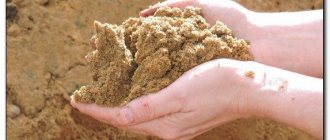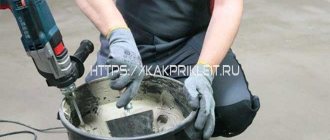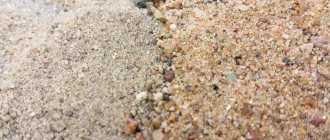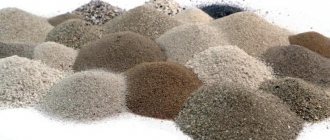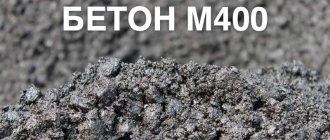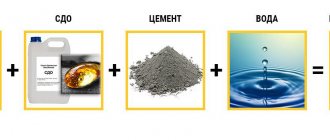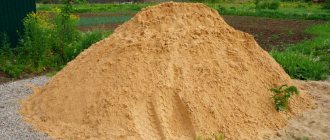When heated to high temperatures of 1000-1150, the rock swells, forming a mass 10-12 times greater than the original volume. Expanded perlite sand is a highly effective insulation material that has good thermal insulation functions and is also a completely environmentally friendly substance.
This sand is different in that it contains from 2% to 5% bound water. Due to its chemical nature, this building material is inert, biologically and chemically resistant.
Technical characteristics and properties of perlite sand
Expanded perlite sand is a high-quality building material that has the characteristics of all the most effective insulation materials. It is persistent, inert and light. In addition, it has high resistance to temperatures. The most common is sand according to GOST 10832-91.
Perlite sand has the following strong qualities:
- Thermal conductivity. Expanded sand has high thermal conductivity due to the fact that it consists of 99-100% glass, and the percentage of porosity in some places reaches 85%. In addition, it directly depends on the bulk density, which can be from 30-40 to 350-400 kg/m3. Temperature, moisture content of the material, type and porosity also affect thermal conductivity.
- Sound absorption. Sound and noise insulation are an integral part of modern building materials. Now production technologies are aimed at increasing sound insulation and reducing sound permeability. Thus, in silicate materials, the sound absorption effect is achieved due to two parameters: the porosity of the material and its structure. Porous glassy systems have the highest sound-absorbing effect. It is well justified that perlite sand has the greatest soundproofness at the lowest bulk density. If you are trying to create the most soundproof room possible, then perlite sand with a bulk density of 30 to 50 kg/m3 is perfect for this task.
- Water absorption. Perlite expanded sand is a very moisture-intensive building material. The volcanic rock from which this material is produced has the finest capillaries. The latter absorb liquid. In other words, this sand should not be used in places with high humidity.
Features of expanded perlite sand:
What it is?
Perlite is a neutral rock of volcanic origin. It is formed from obsidian (otherwise called volcanic glass) due to its saturation with water coming from underground.
It differs from other rocks of similar origin by the presence of bound water inside in a volume of 1 to 4%, which is released only after heating.
Perlites vary in color and texture. Shades of natural substances are black, greenish, brown, white, reddish and brown. Based on the predominance of textural features, they are divided into banded, breccia-like, massive, and pumice-like.
Due to the presence of water in a bound state inside, perlite, when heated at temperatures above 800 degrees, begins to swell and at this moment is capable of increasing in volume up to 20 times.
Production technology
Currently, the technology of 2-stage heat treatment is used very widely and quite successfully, thanks to which expanded perlite sand is obtained with a bulk density of no higher than 150 kg/cub.m. The resulting raw material has a predominantly closed type of grain porosity.
Manufacturing is carried out in a shaft furnace, which entails the following advantages of this technology:
- Increasing the technological capabilities of perlite sand;
- Production of several types of porous structures on the same production line. Thus, it is possible to obtain perlite with an open and closed porous type, which minimizes water absorption and increases strength;
Scheme for the production of expanded perlite sand
Stages of screeding
Throughout the entire preparation period, they work with the building level and beacons. The beacons are installed in increments of 1.5 m parallel to each other and checked with a level. The result depends on the correctness of their location.
Screed
The first beacon is installed at a distance of 20-30 cm from the wall. The second and subsequent ones are mounted at a specified distance from the first, but must coincide with it in height.
The height is determined and verified using the building level. There are also laser levels or levels for this, but these are professional equipment. At home, you can get by with a water level.
Screed for heated floors
The finished mixture is poured between the beacons, leveled and distributed according to construction rules (this is an aluminum construction tool, made in different sizes and used for leveling plastered surfaces). The solution itself is poured just above the level of the beacons.
After completing work with the cement-perlite screed, inspect the surface for cracks and check with a level. The screed will dry out in 25-28 days (watering is required 2 times a day to prevent cracking). After drying, check the floor by tapping. A loud sound indicates a good bonding of the screed, a dull sound means that the top layer has separated.
Perlite for making batches
Cement-perlite floor screed is the best choice. It is used almost everywhere in construction, it allows you to level the floor, improve its hydro- and thermal insulation characteristics and prepare the surface for laying the finishing material.
Average score of ratings is more than 0
Share link
Comments There are no comments yet, but you could be the first...
Areas of application
Perlite sand is most popular in construction. For more than half a century, it has been used as a reliable and high-quality insulation material, both in its original form and as part of thermal insulation products. Insulating floors, walls, floors and attics using perlite sand will allow you to maintain the warmth and comfort of your home for a long time.
Plaster mixtures that use perlite sand as a component are exceptionally attractive, as well as an increased degree of thermal insulation.
Perlite-based plaster is perfect for finishing rooms that require increased sound insulation, heat-saving properties and better acoustics.
Lightweight building mixtures based on perlite are widely used both abroad and in domestic construction. Cavities in blocks, walls and wells, seams and cracks will perfectly accept cement mortar based on this building material. Such a solution is most cost-effective when laying light brick or foam block, the properties of which are close in nature to the structure and characteristics of the composition.
The video shows the preparation of a homemade plaster mixture based on perlite:
Perlite sand on bitumen mastic is an excellent solution for waterproofing and roofing problems. Mastic is an elastic, astringent substance that has high strength and elasticity.
Agroperlite (perlite sand) with a slightly larger grain fraction is one of the types of processed rock that is used in agriculture for growing plants. When this substance is added to the soil, moisture is retained and accumulated, which allows plants not to dry out and constantly replenish their water balance.
Moreover, perlite is a natural leavening mineral that is used to grow juicy tomatoes. This sand is environmentally friendly, as it does not emit various acids and waste.
Examples of using agroperlite
Using perlite for plants
Perlite for greenhouses
Plaster solutions
The density of expanded perlite allows the material to be used for preparing plaster solutions. They are well suited for thermal insulation of houses, since a layer of such plaster with a thickness of only 3 cm replaces brickwork of 1 brick.
The advantage of the mixture is that it can be applied to any surface - from wood to cinder concrete. At the same time, such plaster does not lose its properties. To prepare it, fine perlite powder is used. After complete drying, such plaster can be subjected to any finishing - it is equally good for subsequent painting and for wallpapering.
Advantages and disadvantages
So, perlite sand of various types and fractions has, of course, various strengths and has certain disadvantages. However, by grouping them together, you can structure the pros and cons of using perlite as follows:
Advantages of perlite:
- Non-flammable, has a high temperature threshold;
- High heat, sound and waterproofing properties;
- Biologically stable and inert, does not promote the proliferation of rodents and bacteria;
- Durable, environmentally friendly material;
Weaknesses of perlite and agroperlite sand:
- Such sand is not available in all construction stores, and its cost is slightly higher than similar products;
- Before use, the sand must be moistened as it generates a lot of dust;
- Its white and cream color gives certain difficulties in agriculture, especially when determining the degree of soil deterioration;
- Due to the presence of a positive electric charge, it does not take part in ion exchange.
Options for using agroperlite in crop production
Agroperlite is mostly used when growing indoor and garden flowers. However, the material’s properties are also good for vegetable crops, as it enhances their growth, facilitates care and increases productivity. Experienced gardeners use perlite in several ways when growing plants.
To improve growth and root formation
In heavy, compacted soils, plant roots do not develop well enough, do not absorb nutrients and moisture well, and are also susceptible to rot.
Adding perlite to the planting mixture helps reduce this likelihood. Typically the proportion is 40:60, where 40% is agroperlite and 60% is earth. In mixtures for indoor plants, there may be a third of perlite.
In agoroperlite soil, the root system develops evenly, as it receives a sufficient amount of moisture, air and nutrients. Optimal air exchange also reduces the risk of root rot.
Agroperlite is an absolutely sterile material, as it undergoes heat treatment, so when it is added, pathogenic microorganisms do not enter the soil.
It can be used not only for planting plants with seeds and tubers, but also for planting seedlings with an existing root system in the soil.
Hydroponics
Many plants are grown hydroponically. Its essence boils down to the fact that the roots receive the elements necessary for growth not from a lump of earth, but from a nutrient solution (water).
As a result, there is no need for a strong expansion of the root system, but instead, the above-ground part of the plants actively develops, that is, the yield increases.
When choosing hydroponics, the aqueous solution can be replaced with an inert substrate, which in this case will be agroperlite.
The high porosity and conductivity of perlite ensures good moisture saturation of the roots. Hydroponics is applicable to most plants, except those that form tubers, since under the influence of abundant moisture they rot.
At the same time, you can increase the indoor humidity when it comes to growing indoor plants. To do this, agroperlite is scattered into large pallets, and pots with flowers or other crops are placed on top of them.
The substrate is periodically shed generously; as it heats up in the room, the granules will release the accumulated moisture by evaporating it.
For seeds and cuttings
Agroperlite is used in several ways when germinating seeds:
The use of perlite when growing cuttings has a good effect on accelerating their growth, especially when it comes to crops that require moderate but regular watering.
Porous granules maintain the required level of soil moisture and prevent the appearance of rot. Agroperlite is suitable for growing cuttings of hydrangea and azalea, as well as similar indoor and garden plants.
However, when germinating seeds and rooting cuttings in agroperlite soil, it is necessary to take into account that the breed does not contain microelements valuable for plants. Therefore, it is necessary to fertilize with complex fertilizers and introduce bacterial preparations that improve the microflora.
But the additives used should not contain Ca (calcium), since under the influence of this trace element neutral agroperlite will turn into alkaline.
Improving soil with perlite
In most garden plots, the soil is heavy and dense. Even a high sand content in such soils does not improve its quality, since over time the soil cakes.
Such soil is not suitable for growing plants, since the development time of rhizomes increases and the likelihood of diseases increases.
The addition of volcanic rock, as already mentioned, makes the soil more porous and lighter. The optimal content of expanded agroperlite is from 20 to 35% of the total mass of the mixture.
Suitable soil for growing can be prepared by mixing:
Volcanic rock can be added to any substrate. Open ground can be processed by pouring clean perlite onto its surface, then the ground must be dug up or plowed.
In windy weather, agroperlite is pre-wetted and dug up along with the soil at the rate of 4 liters per square meter. Cover the substrate to a depth of 1-2 shovels.
Perlite is used much more often in indoor gardening compared to growing garden crops, since in this case the rock is required in small quantities.
Before planting flowers, the soil substrate must be mixed with agroperlite granules in a 3:1 ratio and poured into a flowerpot, after which you can begin planting directly.
Mulching
Mulching refers to laying a layer of organic or inorganic material on the surface of the soil. Organic mulch (sawdust, leaves, hay) decomposes quickly. Inorganic, which includes perlite, retains all its properties throughout the summer.
Mulching with agroperlite has several effects:
Perlite as a mulch is mainly used for plants and shrubs. The coarse fraction should be scattered around the plants in a layer of 5 cm, leaving free space for watering next to the trunk.
Perlite when growing seedlings
Planting grown seedlings in soil enriched with perlite reduces the likelihood of plant diseases, promotes their rooting and better development of rhizomes.
The soil mixture is prepared taking into account the type of vegetable crop:
Drainage
Perlite's properties are also optimal for drainage, which is necessary so that the roots receive the required amount of oxygen and the water in the pots does not stagnate.
Agroperlite, as a drainage layer, is poured onto the bottom of the pot in a layer of 3 cm. The nutrient mixture is laid on top, and the plant is already planted in it. Perlite drainage removes excess water from the soil and at the same time prevents the roots from drying out.
Perlite as a storage substance
When storing vegetables and fruits for long-term storage, many people use sawdust or sand for pouring. You can replace them with perlite.
The rock granules absorb excess moisture well, prevent the formation of rot on fruits, slow down the germination process, and neutralize the gas released by ripening apples.
The harvest is laid out in containers in layers, preferably so that the fruits do not touch each other. Perlite is poured onto the bottom and between layers 3-5 cm thick.
Perlite or vermiculite - what's the difference?
Firstly, perlite sand is slightly coarser than vermiculite. In addition, if vermiculite is a completely natural material, then perlite sand is an artificial material obtained by expanding glass. Perlite is a neutral element to the soil, while vermiculite can cause soil oxidation if added in excess. Both elements make it lighter and airier and also encourage moisture retention for plants.
Photo of packaged perlite sand
Origin
The word “perlite” is translated from French as “pearl”, and the grains of sand really do have a pearl-like texture. However, perlite has nothing to do with shellfish and especially with jewelry.
Grains of sand are formed as a result of the release of magma to the surface during a volcanic eruption - at the moment when the hot mass quickly cools. The result is a volcanic glass known as obsidian.
Those layers of material that are deep underground are exposed to underground water (they change their structure somewhat, absorb a certain amount of moisture), and the output is grains of perlite, or, scientifically, obsidian hydroxide.
The service life of perlite sand and is it harmful to health?
Perlite sand is a universal and useful, expanded and glassy material that is used in a fairly wide industrial and household range. Its prevalence is not impressive, but the price is within reasonable limits, which makes its use economically profitable.
Average cost of perlite sand of various fractions
| Name | Cost, rub |
| Expanded perlite sand, fr.0.16-1.25, M-75, GOST 10832 | 1550 |
| Expanded perlite sand, fr.0.16-1.25, M-100, GOST 10832 | 1550 |
| Agroperlite, fr.0.16-5.0, M-150, GOST 10832 | 2200 |
Sand has a white, light and cream color, so it is not entirely appropriate in the agricultural sector, but it serves well as insulation or a binder for various building mixtures. Because sand is environmentally friendly and clean. It can be used in the construction of residential buildings and their insulation. If you close your eyes to problems with water absorption and some impracticalities in crop production, you can confidently rate perlite sand as a solid five.
Since the shortcomings of this building material cannot be ignored, a rating of 4.5 will be quite objective. We hope that our advice will help you more accurately decide whether you should use this building material, weighing all its pros and cons.
Floor insulation
Not only private houses, but also dwellings in multi-apartment apartments may require additional insulation. To do this, it is important to free the surface from the previous coating. Also, some communications or a heated floor system are often placed under the screed.
In order to insulate a floor using expanded perlite, you must proceed as follows:
- Completely remove the old floor covering and, if necessary, the concrete layer.
- For insulation, fine perlite is used - up to 6 mm.
- It must be spread in an even layer. Most often it is about 3-5 cm. This is enough to hide uneven floors and provide thermal insulation.
After the perlite is poured out, it needs to be lightly tamped so that it becomes compact. After this, the floor is ready for pouring concrete screed.
We study all known varieties
In total, there are 4 forms of release of this insulation: backfill (it is also called sand), slabs (outwardly similar to penoplex), roofing models and dry building mixtures. These varieties have some features that you should know.
Backfill insulation
The first form factor of Perlite to emerge was loose insulation. The main task of this material in the construction of houses is to lighten the structure (it is lighter than a standard cement-sand mixture) and increase its thermal insulation qualities. This layer is usually used for backfilling floors and interfloor layers. It is also often used to fill voids in wall masonry. Less often it is used in combination with (or instead of) warm plaster.
The most convenient and practical form is slabs
According to official statistics, about 60% of all Perlite produced on the planet goes to create thermal insulation boards. They are obtained by hydraulic pressing, making them very convenient to use. The binder may differ depending on the specific type (bitumen, lime, polymer compounds, cement, liquid glass, etc.).
This category of materials has quite high hygroscopicity. Therefore, it is mostly used for interior decoration. However, when laying an additional moisture-proof layer, it can also be used for exterior finishing. However, this is not very justified from an economic point of view.
Roofing models
From the name, it is obvious that such analogues are used primarily for roof finishing. For this task, the so-called bitumen perlite is used. This material allows you to create a thermal insulation layer of any shape, so it is often used for buildings of unusual design.
Important! There is no need to heat this coating before use!
The average thermal conductivity for this variety is 0.067 W (m*C), which is a very worthy result. This coefficient allows the use of this coating even in northern regions. It is also worth noting the non-flammability of this insulation, which ensures the overall safety of the building.
We recommend: Finishing the ceiling on balconies and loggias: what to cover with, what design options are better
Dry building mixtures based on Perlite
As a result of mixing cement and perlite sand, a very effective dry construction mixture is obtained. The solution is prepared very simply - just add water (that is, no additional additives such as PGS or gypsum are required). Basically, a similar composition is used for filling cavities in brickwork, grouting seams and cracks, as well as creating a plaster layer with increased thermal insulation characteristics. At the same time, it allows you to easily level the surface.
